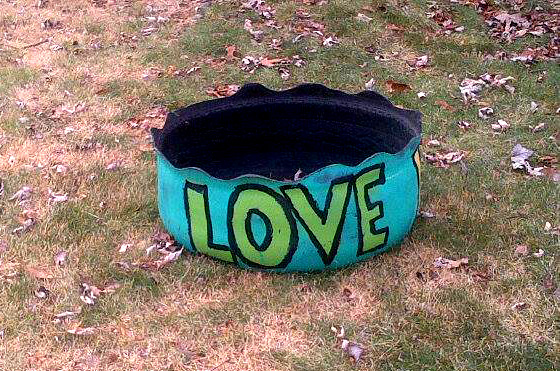Abundance at AVAM and the Value of Supporting Urban farms
I recently visited the American Visionary Art Museum, where there is an exhibit titled “Abundance” open through October 3rd, 2023. The two rooms contained a number of different artistic styles, with a primary focus on sculptures and two-dimensional designs. Every piece was connected by the uniqueness of the materials used to create them. Buttons, rhinestones, thread, yarn, and fabric were more common than the usual paint and clay. With the theme of the exhibit in mind, reflecting on the choices of materials provided an opportunity for thought. It seemed as if the term “abundance” was meant to be interpreted a number of different ways, all of which boiled down to one common idea: a lot. Sometimes this meant prosperity and plentiful-ness, and other times it referred to “too much” of something. I reflected on my own possessions—especially things I felt I had too much of—as I walked through the exhibit, considering how everyday objects could be transformed into such powerful art.
Perhaps the most topical part of the exhibit is a hallway connecting the two rooms. This display is more closely connected to local issues surrounding abundance, with a number of photos documenting urban farms in Baltimore. On the left end of the wall, readers learn that 40% of food grown in the U.S. is never eaten. Because more people live in cities now than 100 years ago, a greater percent of the population depends on industrialized food production to eat. This is a cause for concern in food deserts, where options are anything but abundant. The informational board expresses that urban farms increase access to fresh food in urban areas, and while they do not completely fix food deserts, they are a “partial cure.”
On the other end of the wall, there are three informational boards for different urban farms in Baltimore, with QR codes taking visitors to each respective website. The emphasis on supporting local urban farms encapsulates the themes the exhibit focuses on, from a search for gratefulness to investing energy into the needs of others. The three organizations highlighted were The Farm Alliance of Baltimore, which is made up of a number of urban farms, Plantation Park Heights Urban Farm, and The Greener Garden, which is a member of The Farm Alliance.
Urban farms improve climate resilience by absorbing rainfall, which prevents sewer systems from being flooded with stormwater. This keeps waterways free from pollution and leaves our water cleaner overall—and clean water is the kind of thing that can never be too abundant.




